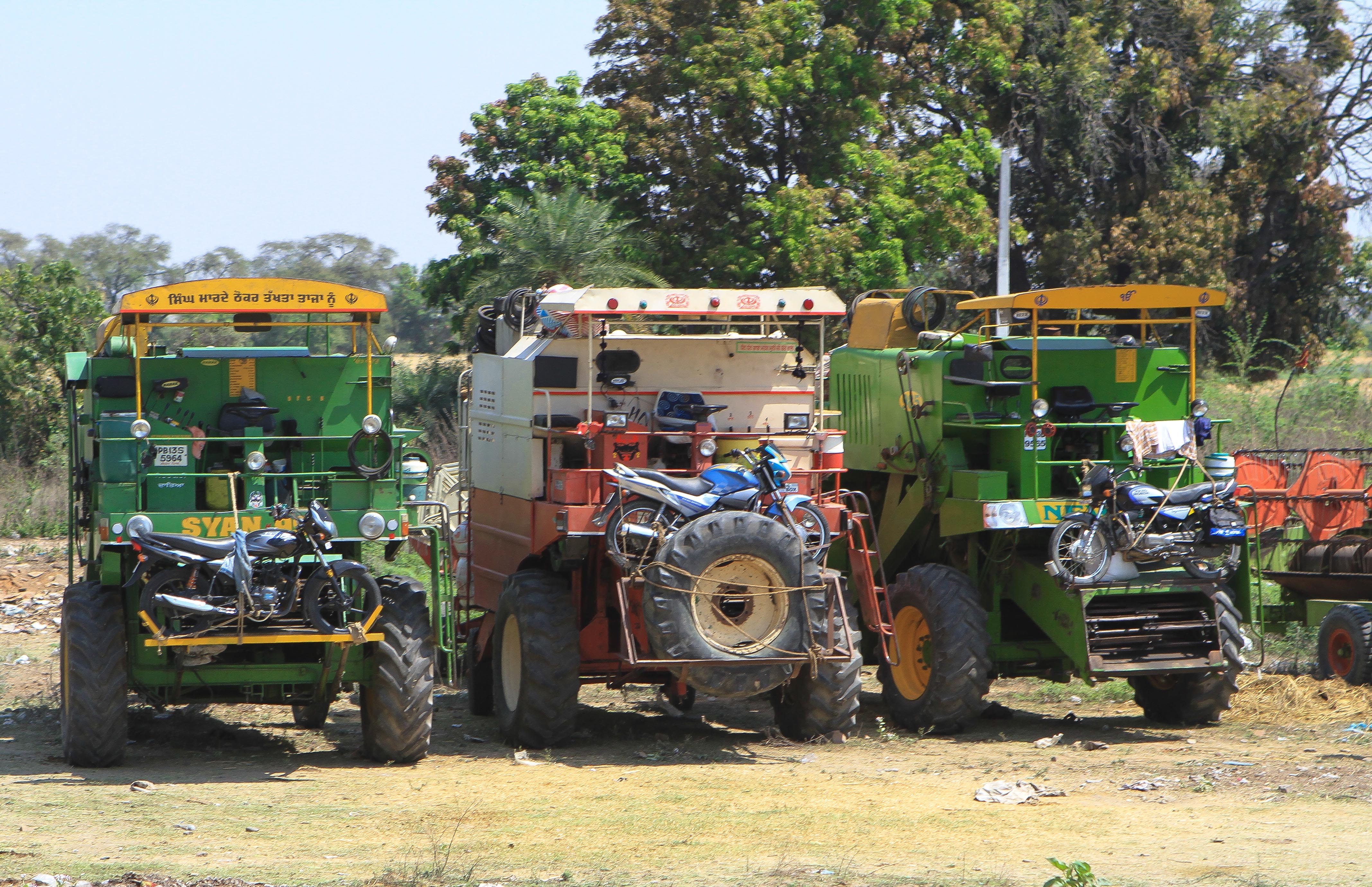MUMBAI, India – Indias goliath tractor market will continue mounting thanks to upticks in non-farming applications, increased mechanization in agricultural industries and more sales in fallow regions – keeping tractor oils demand robust, an Afton spokesman said.
Tractor demand in India is expected to increase, in turn implying that demand for tractor lubricants would continue to grow at healthy rates, Harshad Jambaulikar, senior regional manager at Afton Chemical India Pvt., said in a presentation at the ICIS Indian Base Oils & Lubricants Conference on April 6. India sold more than 600,000 tractors in 2016, Afton estimated.

Photo: Carol Mitchell /Flickr
In addition to farming operations, India uses around 30 percent of its tractors — such as these in Rajasthan — for non-farming applications such as haulage, transportation and utility.
In 2016, India consumed 79,646 metric tons of tractor fluids, which account for 10 percent of the countrys total lubricants market, Jambaulikar said. Engine oils – which include superuniversal tractor oils and dedicated engine oils – make up 49 percent of tractor fluid demand, as do gear and transmission fluids that include super universal oils, universaltractortransmission oils and dedicated sump oils. Other products account for the remaining 2 percent.
Approximately 80 percent of tractor lubricants are sold in the bazaar segment, as Indias farmers often dont have access to service stations or workshops.
Jambaulikar projected the countrys annual tractor oil demand to grow by around 22,000 tons to more than 106,000 tons by 2020. The growth would be driven by increased sales in underserved regions; replacement demand; upticks in the domestic agriculture and construction industries; government efforts to encourage farm productivity; and increasing usage of tractors for non-farm activities, he noted.
Most tractors are used in agricultural operations, he said, but India also uses tractors for non-farming applications such as haulage, transportation and utility. The tractor has evolved into a multi-functional piece of equipment, he explained. Today, approximately 30 percent of Indias tractors are used in non-farming applications.
The agriculture sector accounts for 18 percent of Indias gross domestic product, and the annual monsoon season is the lifeblood for Indias farm-dependent, $2 trillion economy. The country gets over 70 percent of its annual rainfall during the four-month season, and therefore monsoon is crucial for an estimated 263 million farmers. A normal to above-normal and well-distributed monsoon rain boosts farm output and farmers incomes, thereby increasing the demand for consumer and automotive products in rural markets. With normal monsoon seasons, the tractor industry is looking at almost 15 percent growth over the next five years, Jambaulikar projected.
The relation to agriculture and its growth is very heavily connected to having a good monsoon, he added. Theres a direct connect to tractor sales with normal monsoon.
The India Meteorological Department in April projected a normal monsoon season this year, with rainfall at 96 percent of the long-term average volume. The season is considered normal if rain from June to September is between 96 percent and 104 percent of a 50-year average of 89 centimeters.
Yet while there are more than 7 million tractors in India, only one-fourth of cultivable land is mechanized, Jambaulikar said. Therefore, growth potential is enormous if the remaining land also comes under mechanization. Indias growing population and shrinking farm land are also driving a rapid transition toward agriculture mechanization as the government and farmers seek to boost crop productivity, he added.
Despite being the largest market for tractors, Indias adoption of tractors is not uniform. Per 1,000 hectares, India has about 15 tractors whereas Japan has 450, he noted. [Indias] northern states are more or less saturated, with new sales being replacement demand, while the penetration in southern states is quite low, Jambaulikar said. The northern region uses dry farming methods, whereas southern states use wet farming. Mechanization in Indias northern region – which uses about 20 to 25 tractors per 1,000 hectares – has happened in a much bigger way, whereas in the South, only 10 tractors are used per 1,000 hectares.
So the biggest scope for tractors [growth] will be in the South, Jambaulikar said, adding that the tractor penetration in India can easily double to 30 tractors per 1,000 hectares over the next 10 years.
He noted global original equipment manufacturers including John Deere, CNH, Deutz-Fahr and Kubota had realized the growth potential of Indias tractor market and set up their shops in the country several years ago. Theyre now in a better position to capture market share, although growth opportunity will lure more foreign OEMs to set up local manufacturing plants, he added. Indian manufacturers like Mahindra and Mahindra Ltd. and others have also enhanced their capacities.
Jambaulikar said demand is gradually shifting to oil-immersed brakes for tractors with more than 41 horsepower, which accounted for around half of sales in 2016. He noted that UTTOs are key in wet-brake systems. The 41-50 horsepower segment witnessed 20 percent growth rate in demand for UTTOs. Growth in the higher horsepower segment is driven by increased usage of implements requiring higher power and usage of tractors for heavy loads transportation, Jambaulikar explained.
Tractor rental services are another key factor expected to drive growth. Jambaulikar said OEMs like Mahindra, which launched an organized farm equipment rental service called Trringo, are offering the services specifically for end-users who dont see buying tractors as an attractive proposition. There is also an option available to the members of cooperative societies to lease tractors. This is something that will take off in a big way going forward, he noted.